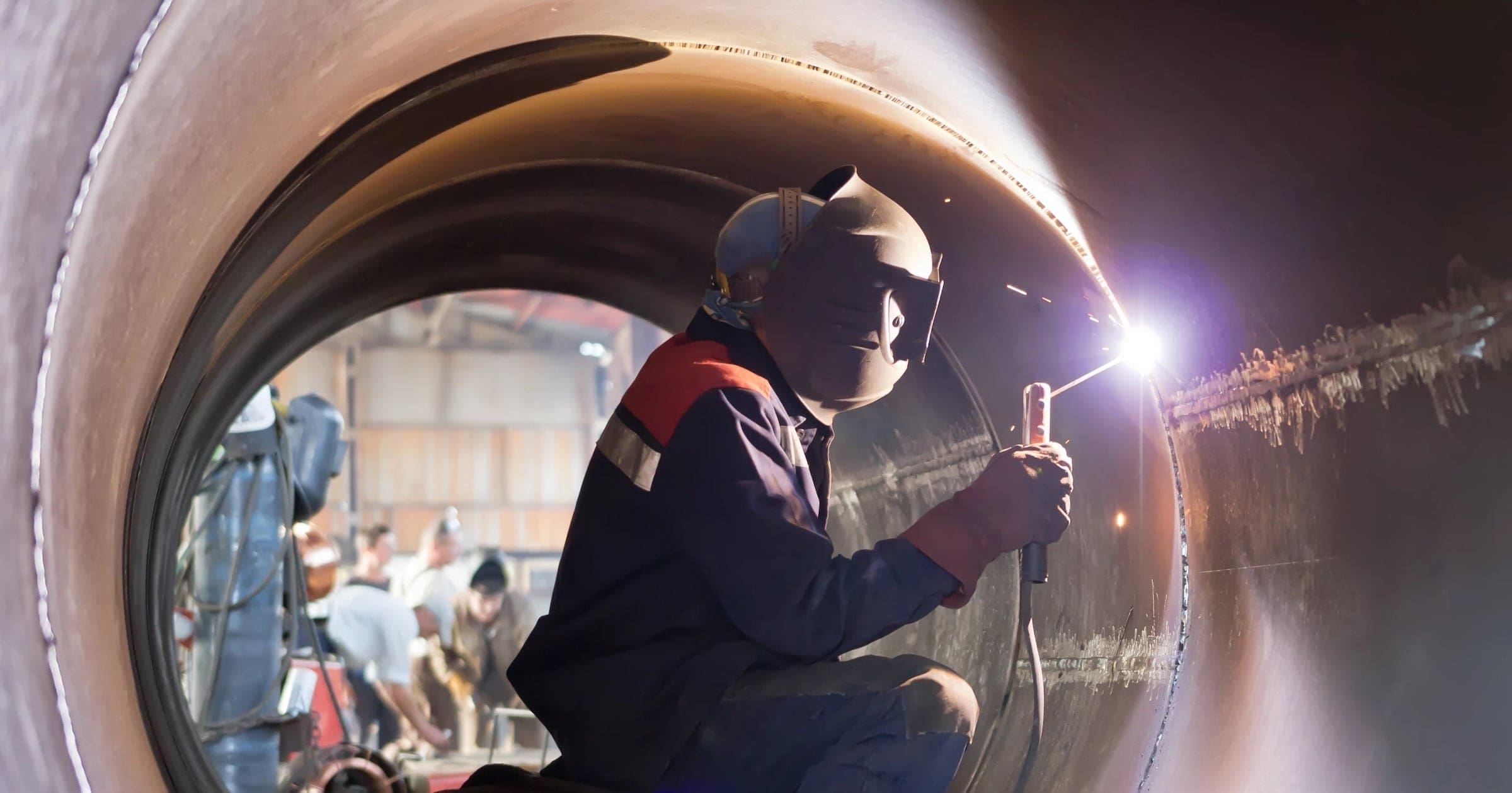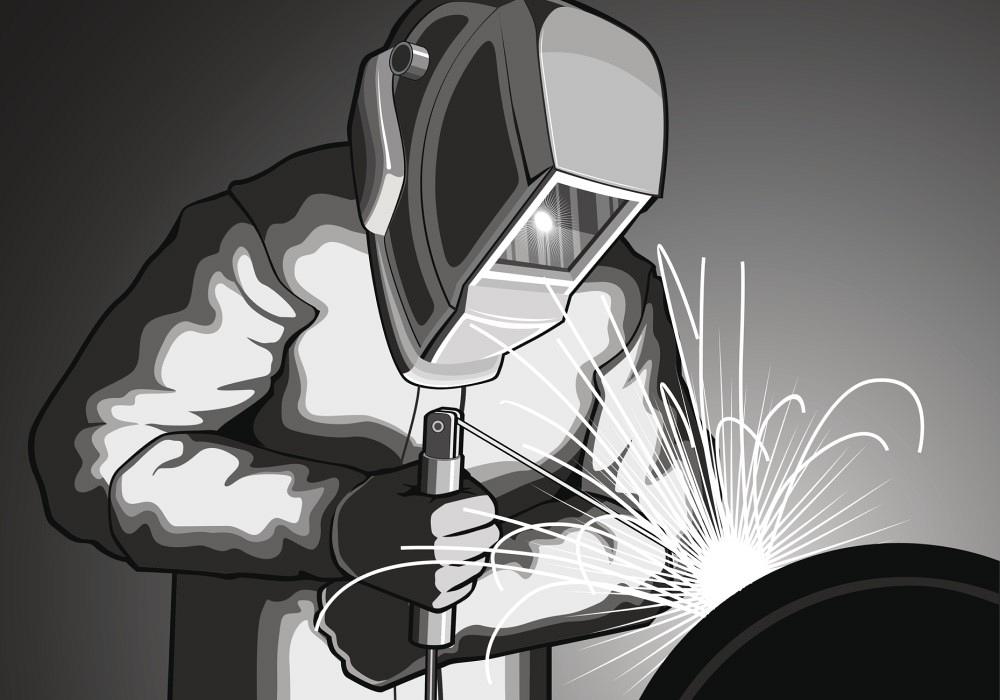Ways to minimize distortion in Montana Mobile Welding and Repair Welding projects
Wiki Article
All Regarding Welding: Secret Insights Into Techniques and Ideal Practices for Success
Welding encompasses a variety of techniques, each matched for particular products and applications. Understanding these techniques, such as GMAW, SMAW, and TIG, is essential for attaining perfect outcomes. In addition, the best tools and security methods can not be overlooked. As preparation and fixing play crucial duties in the welding process, mastering these elements can considerably boost the quality of the final product. What are the vital factors that assure a successful weld?Understanding Different Welding Strategies
Welding strategies incorporate a selection of approaches, each suited to particular applications and products. Among the most usual methods are Gas Metal Arc Welding (GMAW), Shielded Steel Arc Welding (SMAW), and Tungsten Inert Gas Welding (TIG) GMAW, likewise recognized as MIG welding, is preferred for its speed and convenience, making it perfect for slim materials. SMAW, or stick welding, is favored for its simpleness and performance in outside environments, specifically with thicker metals. TIG welding uses accuracy and control, making it suitable for detailed job and non-ferrous steels (Montana Mobile Welding and Repair Fabrication). Each technique has its distinct advantages and factors to consider, enabling welders to choose the most effective technique based on the task's demands, material type, and preferred outcomes. Understanding these techniques is necessary for effective weldingEssential Welding Equipment and Devices
While different welding methods need certain skills, the right tools and devices are similarly important for achieving top quality results. Crucial welding tools includes welding machines, which vary depending upon the method-- such as MIG, TIG, or stick welding. Safety gear, including helmets, aprons, and gloves, guarantees security and comfort throughout the procedure. On top of that, components and clamps help secure materials in position, guaranteeing accuracy in welds. Consumables like welding poles, wire, and shielding gas are additionally essential parts that affect the top quality of the weld. Tools such as cutters and grinders help with surface area prep work and post-weld finishing, contributing to an expert end result. Spending in top notch equipment inevitably boosts the performance and efficiency of welding projects.Security Practices in Welding
Proper security techniques are necessary in the welding market to shield employees from possible risks. Welders must wear proper individual safety devices (PPE), consisting of helmets with proper shading, handwear covers, and flame-resistant apparel. Ample ventilation is important to lower direct exposure to hazardous fumes and gases produced during the welding process. In addition, employees must be learnt the right handling of welding devices to stop accidents. Fire precaution, such as maintaining combustible materials far from the welding area and having fire extinguishers easily offered, are needed. Regular inspections of tools and workspaces can assist identify prospective risks before they cause crashes. By sticking to these safety and security methods, welders can produce a more secure working setting and reduce dangers connected with their trade.Preparing Products for Welding
Preparing products for welding is an essential step that substantially influences the top quality and honesty of the end product (Belgrade Welding). Correct prep work entails cleansing the surfaces to eliminate impurities such as dirt, rust, and oil, which can endanger the weld. Strategies such as grinding, fining sand, or using solvents are commonly used to achieve a clean surface area. In addition, making certain that the materials mesh snugly is essential; spaces can lead to weak welds. It's also vital to take into account the alignment and positioning of the elements, as this will certainly influence the ease of welding and the final outcome. Selecting the suitable filler product and guaranteeing compatibility with the base metals is important for accomplishing solid, resilient welds.Tips for Achieving High-Quality Welds
Accomplishing top notch welds needs interest to information and adherence to best techniques throughout the welding procedure. Proper joint preparation is vital, guaranteeing surface areas are complimentary and tidy from impurities. Choosing the suitable filler product and welding technique based on the base steels is important for ideal bonding. Preserving constant travel speed and angle while welding can promote and prevent flaws uniformity. Furthermore, controlling warmth input is vital; excessive warmth can bring about bending and weakened joints. Consistently examining the welds during the process enables for immediate changes if essential. Lastly, employing suitable post-weld treatments, such as cleansing and stress and anxiety relief, can boost the toughness and integrity welding steel of the weld, eventually making certain a successful result.Troubleshooting Common Welding Issues
Welding usually provides obstacles that can impact the quality and stability of the last product. Usual issues such as porosity, irregular weld grains, and overheating can emerge, each calling for details fixing strategies. Recognizing these problems is important for welders to enhance their abilities and accomplish excellent outcomes.Porosity Problems Explained
Although porosity can usually be ignored, it continues to be a vital issue in welding that can endanger the honesty of a completed item. Porosity refers to the presence of small gas pockets within the weld bead, which can lead and deteriorate the joint to premature failing. This issue commonly arises from impurities, wetness, or inappropriate shielding gas coverage throughout the welding process. To alleviate porosity, welders should verify that the base products are completely dry and tidy, use appropriate shielding gases, and preserve consistent welding parameters. Routinely checking the equipment and setting can additionally aid identify prospective problems prior to they show up in the weld. Dealing with porosity successfully is necessary for achieving strong, resilient welds that meet top quality standards.
Inconsistent Weld Beans
Irregular weld beads can considerably impact the top quality and toughness of a completed product. Different factors add to this problem, including incorrect traveling speed, wrong amperage setups, and inconsistent electrode angles. When the welder moves also quickly, a bead might appear slim and lack infiltration, while moving too gradually can cause too much accumulation. In addition, utilizing the wrong amperage can result in either damaging or extreme spatter, both of which compromise weld stability. The welder's method, such as journeyman welder inconsistent lantern motion, can likewise bring about irregular bead appearance. To minimize these troubles, welders ought to concentrate on maintaining constant, regulated motions and making certain correct devices setups to achieve uniformity in their welds. Consistency is crucial to achieving solid and trusted welds.Overheating and Bending Issues
Too much warmth throughout the welding process can bring about substantial overheating and warping issues, impacting the structural integrity of the work surface. These troubles usually materialize as distortion, which can compromise positioning and fit-up, making Extra resources additional setting up testing. Factors adding to overheating consist of the choice of welding criteria, such as voltage and take a trip rate, along with the sort of product being bonded. To reduce these concerns, welders need to preserve constant travel rate and ideal warm input while keeping an eye on the work surface temperature. Additionally, pre-heating or post-weld heat therapy can aid alleviate tensions triggered by rapid cooling - Montana Mobile Welding and Repair. Normal evaluation and adherence to finest practices are important in stopping getting too hot and ensuring the longevity and reliability of bonded frameworksRegularly Asked Concerns
What Are the Occupation Opportunities in the Welding Market?
The welding market supplies diverse job opportunities, including positions as welders, educators, designers, and inspectors. Experts can operate in manufacturing, building, aerospace, and auto industries, gaining from solid demand and competitive salaries in different roles.How Can I Boost My Welding Rate Without Sacrificing High Quality?
To improve welding speed without sacrificing high quality, one ought to exercise effective techniques, keep tools, enhance settings, and boost hand-eye sychronisation. Normal training and seeking feedback can likewise substantially add to achieving quicker, top notch welds.What Certifications Are Available for Welders?
Numerous certifications exist for welders, consisting of those from the American Welding Society (AWS), the National Facility for Construction Education and Study (NCCER), and numerous industry-specific companies. These qualifications improve employability and demonstrate skill proficiency.Exactly How Does Welding Influence the Residences of Metals?
Welding influences the properties of metals by changing their microstructure, which can bring about adjustments in firmness, stamina, and ductility. Warm input and air conditioning rates throughout the process substantially affect these material qualities.Can I Bonded Dissimilar Metals Together?

Report this wiki page